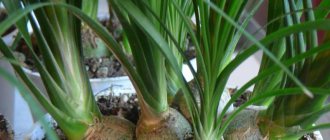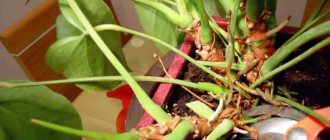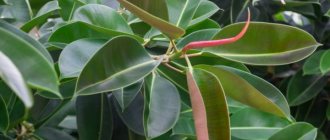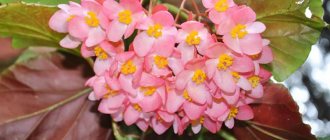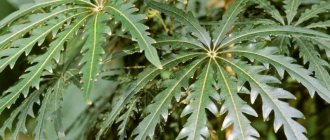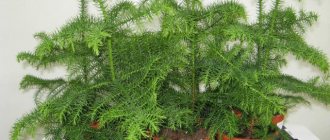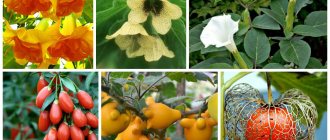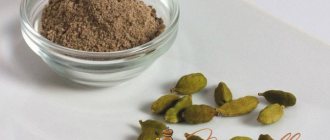Author: Elena N. https://floristics.info/ru/index.php?option=com_contact&view=contact&id=19 Category: Houseplants Published: February 27, 2017Last edits: April 15, 2021
- Care during flowering
- Growing from seeds
- Diseases and their treatment
- Nepenthes alata
flower (lat. Nepenthes), or pitcher plant, is the only genus of the monotypic family Nepentheaceae. The name “nepenthes” comes from the word “nepenthes” - this is what the herb of oblivion was called in ancient Greek mythology. Where does Nepenthes grow? Most of the representatives of this genus grow in the tropics of Asia, in particular on the island of Kalimantan. The distribution border of Nepenthes in the west reaches Madagascar and the Seychelles, and in the east – New Caledonia, New Guinea and Northern Australia. The predatory plant Nepenthes, which feeds on insects, has strong symbiotic relationships with some representatives of the animal world. For example, large species of the plant are used by mountain tupai as dry toilets: the animals feast on Nepenthes nectar and leave their droppings in the jugs, which serve as fertilizer for the plant. And bats climb into traps to sleep - here they are not bothered by insects and do not have to compete for a sleeping place. As a thank you, the mice leave the plant their excrement, which contains the nitrogen it needs.
Planting and caring for nepenthes
- Flowering: 3 to 7 months in spring and summer.
- Lighting: bright diffused light (southern or eastern window sills with shading during the midday hours). When grown on a northern windowsill in winter, the plant will require additional artificial lighting for 16 hours.
- Temperature: mountain species feel good in the warm season at a temperature of 18-20 ˚C, and in winter at 12-15 ˚C. Lowland Nepenthes prefer temperatures from 22 to 26 ˚C during the period of active growth, and in winter – 16-20 ˚C.
- Watering: regular, preferably through drainage holes. In the warm season, the substrate in the pot should be slightly damp all the time, and in winter it should be allowed to dry to a depth of 5 mm.
- Air humidity: some species require very high humidity - 70-90%; for others, a humidity level of 40% during the day and at least 50% at night is sufficient. Keep Nepenthes on a tray of wet peat or expanded clay and spray its leaves with water daily.
- Fertilizing: Nepenthes is an insectivorous plant and does not require fertilizers. Once a month, place a live bloodworm, fly or spider in one jug, and a different one each time.
- Dormant period: not clearly expressed, but due to operating heating devices, the jugs begin to dry out. In the spring, simply cut the leaves almost to the base, restore the watering regime and water the substrate with a very weak solution of complex mineral fertilizer.
- Replanting: in spring, if absolutely necessary.
- Reproduction: by cuttings, dividing the bush and by seed.
- Pests: aphids and mealybugs.
- Diseases: fungal rot.
Read more about growing Nepenthes below.
Further reading[edit]
- Alejandro, G. J. D., J. P. C. Baysa, B. O. C. Lemana, G. M. Madulara, R. S. Madulid, and D. A. Madulid 2007. Specificity of Nepenthes alata
Blco.
population found in Mt. Guisguis, Zambales inferred from internal transcribed spacer (nrDNA) sequence data. Acta Manilana 55
: 15–21. DOI: 10.3860/acta.v55i0.1482 - Alejandro, G.J.D., R.S. Madulid and D.A. Madulid 2008. Using internal transcribed spacer sequence data (nrDNA) for phylogenetic reconstruction of the endemic Philippine Nepenthes
L. (Nepenthaceae).
Philippine Sci 45
:99–110. DOI: 10.3860/psci.v45i0.994 - Amoroso, V. B. and R. A. Aspiras 2011. Hamiguitan Range: A Reserve of Native Flora. Saudi Journal of Biological Sciences 18
(1):7–15. DOI: 10.1016/j.sjbs.2010.07.003 - Amoroso, V.B., L.D. Obsioma, J.B. Arlalejo, R.A. Aspiras, D.P. Capili, J.J.A. Polison and E.B. Sumile, 2009. Inventory and conservation of endangered, endemic and economically important flora of the Hamiguitan Range, southern Philippines. Blumea 54
(1–3):71–76. DOI: 10.3767/000651909X474113 - An, C.-I., E.-I. Fukusaki & A. Kobayashi 2001. Plasma membrane H+-ATPases are expressed in pitchers of the carnivorous plant Nepenthes alata
Blanco.
Planta 212
(4):547–555. DOI: 10.1007/s004250000455 - An, C.-I., E.-I. Fukusaki & A. Kobayashi 2002. Aspartic proteinases are expressed in pitchers of the carnivorous plant Nepenthes alata
Blanco.
Planta 214
(5):661–667. DOI: 10.1007/s004250100665 - Ahn, K.-I., S. Takekawa, A. Okazawa, E.-I. Fukusaki and A. Kobayashi 2002. Peptide degradation in the pitcher plant of the carnivorous plant Nepenthes alata
Blanco.
Planta 215
(3):472–477. DOI: 10.1007/s00425-002-0768-7 - Bauer, U., C. J. Clement, T. Renner & W. Federlo 2012. Form follows function: morphological diversification and alternative trapping strategies in the carnivorous Nepenthes
pitcher plants.
Journal of Evolutionary Biology 25
(1): 90–102. DOI: 10.1111/j.1420-9101.2011.02406.x - Bauer, U. and U. Federle 2009. Insect-catching rim of Nepenthes
: surface structure and function.
Plant Signaling and Behavior 4
(11):1019–1023. DOI: 10.4161/psb.4.11.9664 - Benz, M. J., E. V. Gorb & S. N. Gorb 2012. Diversity in slippery zone microstructure in the pitchers of nine carnivorous Nepenthes
.
Arthropod-Plant Interactions 6
(1):147–158. DOI: 10.1007/s11829-011-9171-2 - Beveridge, NGP, C. Rauch, PJA Keßler, RR van Vugt & PC van Welzen 2013. A new way to identify living species of Nepenthes
(Nepenthaceae): more data needed!
Carnivorous Plant Newsletter 42
(4): 122–128. - (in Spanish) Blanco, F. M. 1845. Nepenthes
.
In: Flora de Filipinas, segun el sistema sex de Linneo.
Segunda impresion, corregida y aumentada por el mismo autor. D. Miguel Sanchez, Manila. pp. 555–557. - Buch, F. M. Rott, S. Rottloff, S. Paetz, I. Hilke, M. A. Raessler & Mithöfer 2012. The secreted trap-trap fluid of carnivorous Nepenthes
plants is unsuitable for microbial growth.
Annals of Botany 111
(3):375–383. DOI: 10.1093/aob/mcs287 - Cantlie, R. 2000. Nepenthes
in the Philippines. [video] 3rd Conference of the International Society of Carnivorous Plants, San Francisco, USA. - Cheek, M.R. and M.H.P. Jebb 1999. Nepenthes
(Nepenthaceae) in Palawan, Philippines.
Q Bulletin 54
(4):887–895. DOI: 10.2307/4111166 - Cheers, G. 1992. Nepenthes alata
.
In: Letts Guide to Carnivorous Plants of the World
. Letts of London House, London. paragraph 92. - Clark, C. M. 2006. Introduction. In: Dancer, B. H. Nepenthes of the Netherlands Indies
. Natural History Publications (Borneo), Kota Kinabalu. pp. 1–15. - Co, L. & W. Suarez 2012. Nepenthaceae. Digital Flora of the Philippines Co.
- (in German) Eilingsfeld, A. 2008. Endoskop-Aufnahmen aus der Verdauungsflüssigkeit einer Nepenthes alata
.
Das Tablatt 60
: 4–7. - Fontanilla, J. R. & R. Madulid 2002. Morphometric analysis of Nepenthes alata
Blco.
in Mt. Guisguis, Sta. Cruz, Zambales. Acta Manilana 50
: 25–31. - Gaume, L., S. Gorb and N. Rowe, 2002. Function of the epidermal surface in the trapping efficiency of Nepenthes alata
.
New Phytologist 156
(3):479–489. DOI: 10.1046/j.1469-8137.2002.00530.x - Gorb, E. V., K. Haas, A. Heinrich, S. Enders, N. Barbakadze and S. Gorb 2005. Compositional structure of the crystalline epicuticular wax layer of the slippery zone in pitchers of the carnivorous plant Nepenthes alata
and its effect on insect attachment.
Journal of Experimental Biology 208
: 4651–4662. DOI: 10.1242/jeb.01939 - Gorb, E.V. and S.N. Gorb 2006. Physicochemical properties of functional surfaces in pitchers of the carnivorous plant Nepenthes alata
Blanco (Nepenthaceae).
Plant Biology (Stuttgart, Germany) 8
(6):841–848. PMID 17203436 - Gorb, E.V. and S.N. Hump 2009. Chapter 8: Functional surfaces in the pitcher plant of the carnivorous plant Nepenthes alata
: a cryoseme approach.
In: S. N. Gorb (ed.) Functional surfaces in biology: phenomena associated with adhesion
. Volume 2. Springer. pp. 205–238. - (in German) Gronemeyer, T. 2008. Nepenthes
auf den Philippinen - ein Reisebericht.
Das Tablatt 60
: 15–27. - (in German) Gronemeyer, T. & V. Heinrich 2008. Wiederentdeckung von Nepenthes surigaoensis
am Naturstandort auf den Philippinen.
Das Taublatt 60
(1):28–33. - Hatano, N. and T. Hamada, 2008. Proteomic analysis of the pitcher plant of the carnivorous plant Nepenthes alata
.
Journal of Proteomics Research 7
(2): 809–816. DOI: 10.1021/pr700566d - Hatano, N. and T. Hamada 2012. Proteomic analysis of secreted protein induced by a prey component in the pitcher fluid of the carnivorous plant Nepenthes alata
.
Journal of Proteomics 75
(15):4844–4852. DOI: 10.1016/j.jprot.2012.05.048 - Isisaki, K., Y. Honda, H. Taniguchi, N. Hatano and T. Hamada, 2012. Heterogeneous expression and characterization of plant class IV chitinase from the pitcher plant of the carnivorous plant Nepenthes alata
.
Glycobiology 22
(3):345–351. DOI: 10.1093/glycob/cwr142 - Ishisaki, K., S. Arai, T. Hamada and Y. Honda, 2012. Biochemical characterization of recombinant plant class III chitinase from the pitcher plant of the carnivorous plant Nepenthes alata
.
Carbohydrate Research 361
: 170–174. DOI: 10.1016/j.carres.2012.09.001 - Kajii, E., T. Kamesaki, S. Ikemoto & Y. Miura 1988. Enzymes degrading human blood group antigens in Nepenthes alata
.
Die Naturwissenschaften 75
(5):258–259. PMID 3405311 - Kajii, E., T. Kamesaki & S. Ikemoto, 1991. Effect of Nepenthes alata
on cold agglutinin antigens.
Nihon Hōigaku Zasshi 45
(1):30–32. PMID 2046171 - Kamesaki, T., E. Kajii & S. Ikemoto 1989. Purification of a degradative enzyme from Nepenthes alata
against human erythrocyte glycophorin B by high-performance liquid chromatography.
Journal of Chromatography 489
(2):384–389. PMID 2666423 - Kato, M., M. Hott, R. T. Tamin & Itino 1993. Intra- and intra-specific variation in food assemblages and resident communities in Nepenthes
pitchers in Sumatra.
Tropical Zoology 6
(1): 11–25. Abstract - Kyiv, R.G. 1990. Jugs of Gunung Tahan. Journal of Wildlife and National Parks (Malaysia) 10
: 34–37. - Lecoufle, M. 1990. Nepenthes alata
.
In the book.
:
Carnivorous plants: care and cultivation
. Blandford, London. pp. 118–121. - Macfarlane, J. M. 1927. A Philippine species of Nepenthes
.
Philippine Journal of Science 33
(2): 127–140. - (in Indonesian) Mansur, M. 2001. Koleksi Nepenthes
di Herbarium Bogoriense: prospeknya sebagai tanaman hias.
In: Prosiding Seminar Hari Cinta Puspa dan Satwa Nasional
. Lembaga Ilmu Pengetauan Indonesia, Bogor. pp. 244–253. - (in German) McPherson, S. & T. Gronemeyer 2008. Die Nepenthesarten der Philippinen: eine Fotodokumentation. Das Tablatt 60
:34–78. - Meimberg, H., P. Dittrich, G. Bringmann, J. Schlauer & G. Heubl, 2000. Molecular phylogeny of Caryophyllidae s.l. based on matK
with special reference to predatory taxa.
Plant Biology 2
(2):218–228. DOI: 10.1055/s-2000-9460 - Meimberg, H., A. Wistuba, P. Dittrich & G. Heubl 2001. Molecular phylogeny of the Nepenthaceae based on cladistic analysis of plastid trnK intron sequence data. Plant Biology 3
(2):164–175. DOI: 10.1055/s-2001-12897 - (in German) Meimberg, H. 2002. Molekular-systematische Untersuchungen an den Familien Nepenthaceae und Ancistrocladaceae sowie verwandter Taxa aus der Unterklasse Caryophyllidae sl. PhD. PhD thesis, Ludwig Maximilian University of Munich, Munich.
- Meimberg, H. & G. Heubl 2006. Introduction of a nuclear marker for phylogenetic analysis of Nepenthaceae. Plant Biology 8
(6):831–840. DOI: 10.1055/s-2006-924676 - Merrill, E. D. 1905. Nepenthaceæ. In: Review of species definitions described in Flora de Filipinas Blanco
. Public Press Bureau, Manila. paragraph 72. - Merrill, E. D. 1918. Nepenthaceae. In: Species of Blancoanae: a critical revision of the Philippine plant species described by Blanco and Llanos
. Printing Bureau, Manila. paragraph 160. - Mey, F. S. 2013. Neotypification of Nepenthes blancoi
and description of
N. abalata,
a new species from the Philippines.
Strange Fruits: A Garden's Chronicle
, February 11, 2013 - Mey, F. S. 2013. Nepenthes alzapan
and an army of new species from the Philippines.
Strange Fruits: A Garden's Chronicle
, July 15, 2013 - Mithoefer, A. 2011. Carnivorous pitcher plants: ideas on an old topic. Phytochemistry 72
(13):1678–1682. DOI: 10.1016/j.phytochem.2010.11.024 - Owen, T.P. and K.A. Lennon, 1999. Structure and development of pitchers of the carnivorous plant Nepenthes alata
(Nepenthaceae).
American Journal of Botany 86
(10):1382–1390. - Owen, T.P., K.A. Lennon, M.J. Santo and A.N. Anderson, 1999. Nutrient transport pathways in pitchers of the carnivorous plant Nepenthes alata
.
Annals of Botany 84
: 459–466. DOI: 10.1006/anbo.1998.0944 - Pavlovic, A., E. Masarovicova and J. Hudak, 2007. Predatory syndrome in Asian pitcher birds of the genus Nepenthes
.
Annals of Botany 100
(3):527–536. DOI: 10.1093/aob/mcm145 - Renner, T. and S.D. Specht, 2011. A sticky situation: assessing adaptations to plant predation in Caryophyllales using stochastic trait mapping. International Journal of Plant Sciences 172
(7):889–901. DOI: 10.1086/660882 - M. Riedel, A. Eichner & R. Jetter, 2003. Slippery surfaces of carnivorous plants: composition of epicuticular wax crystals in Nepenthes alata
Blanco pitchers.
Planta 218
(1):87–97. DOI: 10.1007/s00425-003-1075-7 - Rottloff, S., R. Stieber, H. Maischak, F. G. Turini, G. Heubl & A. Mithöfer 2011. Functional characterization of a class III acidic endochitinase from traps from the carnivorous pitcher plant genus, Nepenthes
.
Journal of Experimental Botany 62
(13):4639–4647. DOI: 10.1093/JXB/err173 - Santo, M. J., J. S. Massa and T. P. Owen, 1998. Glandular secretion and absorption in the carnivorous pitcher plant Nepenthes alata
.
American Journal of Botany 85
(supp.): 92. - Schlauer, J. 2000. Literature Reviews. Carnivorous Plants Fact Sheet 29
(2):53. - Scholz I., M. Bukins, L. Dolge, T. Erlinghagen, A. Weth, F. Heeschen, J. Mayer, S. Hoffmann, M. Riederer, M. Riedel and W. Baumgartner 2010. Slippery surfaces of the pitcher plant: Nepenthes
wax crystals minimize insect attachment by
microscopic
surface roughness.
Journal of Experimental Biology 213
: 1115–1125. DOI: 10.1242/jeb.035618 - Slack, A. 1979. Nepenthes alata
.
In the book
.
: Carnivorous plants
. Ebury Press, London. pp. 85–86. - Sota, T., M. Mogi and K. Kato, 1998. Food web structure in Nepenthes alata pitcher plants at
local and regional scales.
Biotropica 30
(1):82–91. DOI: 10.1111/j.1744-7429.1998.tb00371.x - (in Indonesian) Syamsuardi & R. Tamin 1994. Kajian kekerabatan jenis-jenis Nepenthes
di Sumatera Barat. Project Report, Andalas University, Padang. Abstract - (in Indonesian) Syamsuardi 1995. Klasifikasi numerik kantong semar ( Nepenthes
) di Sumatera Barat.
[Numerical classification of pitcher plants ( Nepenthes
) in West Sumatra.]
Journal Matematika dan Pengetahuan Alam 4
(1): 48–57. Abstract - Thornhill, AH, IS Harper & ND Halley 2008. Development of digestive glands and enzymes in the pitchers of three Nepenthes
species:
N. alata
,
N. tobaica
and
N. ventricosa
(Nepenthaceae).
International Journal of Plant Sciences 169
(5): 615–624. DOI: 10.1086/533599 - Uy, B.D. 1990. Grancina Nepenthes
Philippines in Retrospect.
Carnivorous Plant Newsletter 19
(1-2): 18–19. - (in Chinese) X. Wu, J. Li, Q. Zhong & X. Wu 2005. 猪笼草组培快繁技术. [Tissue culture and rapid reproduction in Nepenthes alata
.]
Non-timber Forest Research 23
(4): 48–50.
Botanical description
The insectivorous plant Nepenthes is most often a subshrub or shrubby mixotrophic vine. Nepenthes, with long herbaceous stems, climb branches and tree trunks to many meters in height in search of sunlight for their narrow terminal paniculate or racemose inflorescences. The leaves of Nepenthes are large, alternate, with a convex midrib and an elongated apex.
Venus flytrap - home care
In addition to ordinary leaves, the plant also develops pitcher leaves, the lower part of the petiole of which, connecting to the stem, is flat and wide, and then it transforms into a thin tendril wrapping around a branch, at the end of which hangs a pitcher, similar to an outlandish flower. The size, shape and color of the jug depend on the type of Nepenthes. The length of the trap can be from 2.5 to 30 cm, although there are species with jugs of half a meter. The color of the pitchers is usually bright - matte white, spotted, red or light green with purple dots. The upper edge of the jug is curved inward and covered with purple or pink grooves.
Special cells located on the inner edge of the jug produce sweet nectar, the inside of the jug is filled with water or digestive fluid containing the nepenthesin enzyme, and the neck is covered with a lid that protects the trap from debris getting into it. Insects, attracted by the aroma of nectar, crawl under the cap, slide into the digestive fluid and drown in it. Digestion of food lasts from 5 to 8 hours, as a result of which only the chitinous shell remains of the insects. Sometimes even birds, amphibians and rodents get into the jugs.
- Primula (Primula) – care, photos, types
Nepenthes flowers are inconspicuous, dioecious, petalless, with imbricated sepals. The fruit is a leathery capsule, divided by partitions into chambers, in each of which small seeds ripen.
In indoor culture, Nepenthes is still rare, since almost all representatives of the genus are too large for small greenhouses, and it is difficult to keep predatory Nepenthes on a windowsill - it requires high air humidity. It is best to grow nepenthes in greenhouses, and their smaller species in a “closed tropical window.”
Description of the predatory culture Nepenthes
The insectivorous pitcher plant causes a feeling of disgust and disgust in some people, but in general the culture, thanks to its excellent decorative qualities, fits well and decorates any interior.
Nepenthes in a decorative pot
Characteristic features of decorative culture:
- a thin stem, the strength of which increases more and more every year;
- unusually shaped flowers with lids that visually resemble miniature jugs;
- the stem reaches 1 m in height;
- The leaves are elongated and elongated, with unusual thin tendrils at the ends.
For your information! Nepenthes pitcher plant feeds on small insects. The presence of bright flowers allows them to be attracted.
Origin of plants
Answering the question of what Nepenthes is, scientists came to the conclusion that it is one of the most ancient plants growing on earth. In the wild, it lives on the island. Madagascar and in Australia and Asia. The culture prefers a hot and at the same time humid climate.
Scientists suggest that the pitcher plant began to feed on insects against a background of nutrient deficiency, and already in the process of evolution, the inflorescences transformed into unusual traps.
A little about the natural habitat
There are quite a large number of varieties of culture, and each of them has its own individual characteristics. Some varieties prefer to grow in marshy areas, while others prefer to grow in highlands.
Growing Nepenthes in the wild
Note! The flowers are heat-loving, due to which some types of nepenthes entwine trees, trying to climb as high as possible.
Caring for Nepenthes at home
Growing conditions
Nepenthes needs bright but diffused light, so it is best to keep the plant on a southern or eastern windowsill, protected from the scorching midday rays with a translucent cloth or paper. When growing a pitcher plant on a western or northern window, provide additional lighting for it. In winter, artificial lighting should work for 16 hours.
According to the requirements for temperature conditions, Nepenthes species can be divided into two groups:
- mountainous - these plants develop comfortably in spring and summer at a temperature of 18-20 ºC, and in winter at 12-15 ºC. Too high a temperature for a long time can provoke the development of diseases;
- lowland nepenthes prefer temperatures from 22 to 26 ºC in summer, but in winter it should be between 16-20 ºC. At lower temperatures, plant life may be at risk.
Ventilate the room regularly so that the air in it does not stagnate, but protect nepenthes from drafts and try to move it as little as possible, because the plant does not like moving and turning around its axis. If you disturb it, Nepenthes may freeze for a month or a month and a half and stop forming pitchers.
Since Nepenthes is a vine, you should prepare a support for it, to which it will need to be tied as soon as it reaches a height of half a meter. It is best to install a support when transplanting a one-year-old plant.
Watering
Caring for Nepenthes includes such a mandatory item as regular moistening of the substrate. To water the plants, use distilled or at least filtered, settled or rainwater at room temperature, or preferably a couple of degrees warmer. The method of watering Nepenthes is from the bottom, after which you must allow excess water to drain. In spring and summer, the substrate in the pot should be slightly moist all the time; in winter, Nepenthes is watered a couple of days after the top 5 mm thick layer of the substrate has dried. If the plant overwinters in a cool place, watering should be careful and not very abundant.
The moisture-loving predator Nepenthes needs not only moist soil - many species also need high air humidity in the range of 70-90%. However, among the pitcher plants grown indoors, there are many that require a humidity level of 40% during the day and 50% at night. Observe the condition of the plant under your usual conditions - it is quite possible that it will be able to adapt to the humidity of the air in your home, but if this does not happen, spray it daily with settled water and place the pot with nepenthes on a tray with damp peat or expanded clay.
Transfer
Nepenthes is replanted only if necessary, which arises, for example, when mold appears on the substrate or the pot no longer corresponds to the size of the root system. Pots, hanging baskets for orchids or flowerpots are used as dishes, and the diameter of the dishes must be at least 14 cm. Store-bought soil for orchids can serve as a substrate.
If you prefer to prepare the soil for nepenthes yourself, mix three parts leaf soil, two parts peat, one part sand and add a little charcoal to this mixture. Or add two parts of high-moor peat to two parts perlite and one part vermiculite. Keep in mind that the pitcher plant does not like acidic soils.
Transplantation is carried out in the spring. If the plant is absolutely healthy, it is transferred from the old container to a new one, trying not to damage the roots. But if you are concerned about the appearance of Nepenthes, remove the plant from the old pot, clean the root system from the substrate and rinse it with distillate, then finish the replanting in the usual way, water the substrate and spray the pitcher plant on the leaves with a solution of Fundazol or Topaz so that the composition gets into the substrate .
If the rooting of Nepenthes is successful, after a couple of weeks, spray the flower and spill its substrate with Zircon solution at the rate of 2-3 drops of the drug per 200 ml of distilled water. After a correctly performed transplant, Nepenthes will live in a new pot for 3-5 years, and if you use volcanic stone, mineral wool, coconut shells or any other slowly decomposing materials as a substrate, then the next time the plant will need to be replanted only after 10 years.
Fertilizer
There is no need to fertilize the Nepenthes soil, since the carnivorous flower obtains its food by eating insects. But there will be no harm if in the summer, once a month, you add complex flower fertilizer to the substrate in a consistency three times weaker than recommended for indoor plants: if you overfeed Nepenthes with fertilizers, it will not form jugs.
- Caring for indoor roses
Nepenthes at home is fed once a month, throwing a bloodworm, spider or fly into a jug - one insect per jug, and not all of it, but only half of it, otherwise the plant will die from excess nitrogen. The insect must be alive. The digestive secretion is formed in the jugs only once, and if the jug is suddenly empty, it will no longer work as a stomach, so do not throw insects into it - this will only lead to the death of the leaf. To extend the life of an empty jug, fill it one-third full with distilled water.
Recommendations
- Clark, K. (2018). " Nepenthes alata
".
IUCN Red List of Threatened Species
.
2018
: e.T49120197A143972386. Retrieved April 17, 2022. - (in Spanish) Blanco, F. 1837 Nepenthes
.
In: Flora de Filipinas.
Segun el Sistema sex de Linneo. Sto. Tomas por D. Candido Lopez, Manila. pp. 805–809. - (in Latin) Blum, K. 1852 Ord. Nepenthaceae. In: Museum Botanicum Lugduno-Batavum, sive stirpium exotarium novarum vel minus cognitarum ex vivis aut siccis brevis expositio.
Volume. II. No. 1. E. J. Brill, Lugduni-Batavorum. pp. 5–10. - Cheek, M. and M. Jebb 2013. Identification and typification of Nepenthes Blancoi
, with
N. abalata
sp.
Nov from Western Visayas, Philippines. Nordic Journal of Botany 31
(2): 151–156. doi:10.1111/j.1756-1051.2012.00012.x - (In French) Brongniart, A. 1824. Observations on the Genres of Cytinus
et
Nepenthes
.
Annals of Natural Sciences 1
: 29–52. - Dancer, B. 1928 1. Nepenthes alata
Blanco.
[page 258–262] In: Nepentasei of the Netherlands Indies. Bulletin of the Buitenzorg Botanical Garden
, Series III,
9
(3–4): 249–438. - ^ a b c d f g gram
Chick, M. and M. Jebb, 2013. Typification and revision of
Nepenthes alata
with notes on
the N. alata
group and
N. negros
sp.
Nov from the Philippines. Nordic Journal of Botany 31
(5): 616–622. doi:10.1111/j.1756-1051.2012.00099.x - Clark, K. and K. S. Lee 2012. Revisiting Nepenthes
(Nepenthaceae) from Gunung Tahan, Peninsular Malaysia.
Archived 2013-10-07 in the Wayback Machine Singapore Garden Bulletin 64
(1): 33–49. - Schlauer, J. Nd Nepenthes alata
. Database of carnivorous plants. - Smithies, B. 1965. Distribution and ecology of pitcher plants ( Nepenthes
) in Sarawak. UNESCO Symposium on the Wet Tropics, June–July 1963, Kuching, Sarawak. - Kurata, S. 1973. Nepenthes
from Borneo, Singapore and Sumatra.
Singapore Garden Bulletin 26
(2): 227–232. - (in Indonesian) Tamin, R. and M. Hotta, 1986. Nepenthes
di Sumatera: Genus
Nepenthes
Sumatra Island.
In: M. Hotta (ed.) Diversity and dynamics of plant life in Sumatra: forest ecosystem and speciation in humid tropical environments.
Part 1: Reports and collection of articles. Kyoto University, Kyoto. pp. 75–109. - Hopkins, M., R. Moulder and B. [R.] Salmon, 1990. A truly enjoyable trip to Southeast Asia. Carnivorous Plant Newsletter 19
(1–2): 19–28. - Shivas, R. 1984. Pitchers of Peninsular Malaysia and Singapore
. Marusen Asia, Kuala Lumpur. - Jebb, M.H.P. AND M.R. Cheek 1997. Skeletal revision of Nepenthes
(Nepenthaceae).
Blumea 42
(1):1–106. - ^ a b c
Cheek, M. R. and M. H. P. Jebb 2001. Nepenthaceae.
Flora Malesiana 15
:1–157. - ^ a b c d e
McPherson, S. 2009.
Water lilies of the Old World
. 2 volumes. Redfern Natural History Productions, Poole. - Rons De Crain, Louis P. (2010-02-04). Floral Diagrams: Helping to Understand the Morphology and Evolution of Flowers
. Cambridge: Cambridge University Press. paragraph 165. ISBN 978-0-521-49346-8. - ^ a b
McPherson, S. and V. Amoroso 2011.
A Field Guide to Pitcher Plants in the Philippines
. Redfern Natural History Productions, Poole. - Suarez, V. 2011. Samara Nepenthes alata
. Carnivorous plants in the tropics, January 12, 2011 - ^ a b
Robinson, A. 2012.
Nepenthes Merrilliana
in Samara. Carnivorous plants in the tropics, June 29, 2012 - Catalano, M. 2009. Nepenthes
.
In: Raising Carnivores - An Italian Perspective
. Prague. pp. 50–57. - ^ a b
Cheek, M. and M. Jebb 2013.
Nepenthes ramos
(Nepenthaceae), a new species from Mindanao, Philippines.
Willdenowia 43
(1):107–111. Doi:10.3372/wi.43.43112 - (in German) Micheler, M., T. Gronemeier, A. Wistuba, D. Marwinski, V. Suarez and V. Amoroso 2013. Nepenthes viridis
, eine neue
Nepenthes
-Art von der Insel Dinagat, Philippinen.
Das Taublatt 76
:4–21. - ^ a b c
Cheek, M. and M. Jebb, 2013. Recirculation
of Nepenthes alata
group (Caryophyllales: Nepenthaceae) in the Philippines with four new species.
European Journal of Taxonomy 69
: 1–23. doi:10.5852/ejt.2013.69 - Cheek, M. and M. Jebb 2013. Nepenthes ultra
(Nepenthaceae), a new species from Luzon, Philippines.
Blumea
, published online October 24, 2013. doi:10.3767/000651913X675124 - May, F.S. 2013. In Nepenthes alata
group: the resurrection
of N. graciliflora
;
N. ramos
and
N. negros
are described as new species.
Strange Fruit: Chronicles of a Garden
, August 27, 2013 - ^ a b
McFarlane, J. M. 1908. Nepenthaceae.
In: A. Engler. Das Pflanzenreich IV
, III, Heft 36:1–91. - ^ a b
Mann, P. 1998. A trip to the Philippines.
Carnivorous Plant Newsletter 27
(1): 6–11. - ^ a b
Kurata, S. & M. Toyoshima 1972. Philippine species
of Nepenthes
.
Singapore Garden Bulletin 26
(1): 155–158. Abstract Archived 2011-07-22 on the Wayback Machine - Fleming, R. 1979. Hybrid Nepenthes
.
Carnivorous Plant Newsletter 8
(1): 10–12.
Nepenthes flowering
Care during flowering
Nepenthes flowers, regular, reddish-brown, collected in erect inflorescences, bloom for quite a long time, sometimes more than six months. You can’t call them spectacular, but their unusualness still attracts.
Nepenthes in winter
Nepenthes does not need rest, but due to the fact that our winters are not like tropical ones, maintaining the plant has its own subtleties. With the onset of deep autumn, all feeding of the plants stops, and the intervals between waterings become longer. Don't worry about the jugs starting to dry out - this is because the indoor air is too dry in winter. In the spring, before the start of a new growing season, cut off all the leaves almost to the base, resume normal watering, add a fertilizer solution to the substrate, and Nepenthes will begin to grow again.
Reproduction of Nepenthes
Growing from seeds
Generative propagation of Nepenthes is an interesting and not very complicated process, if you do not take into account the fact that you are unlikely to be able to buy seed material: no matter what the sellers promise you, instead of Nepenthes seeds you will most likely receive the seeds of some other plant. Another problem with generative propagation is that pitcher plant seeds remain viable for no longer than 2-3 weeks. But if you manage to get your hands on fresh seed, you will almost certainly be able to grow Nepenthes from seeds.
The seeds are evenly distributed over the surface of moistened sphagnum moisturized and disinfected for 2-3 minutes in the microwave, then placed in a plastic container with drainage holes. The crops are moistened with a fine spray, immersed in a plastic box, covered with a transparent lid to create maximum air humidity around the crops, and placed in a greenhouse under a phytolamp.
You will have to ventilate the crops daily and measure the humidity and air temperature in the greenhouse, which should be maintained at 20 ºC and 90-100%, respectively. As soon as the sprouts appear, care for them as you would for any tropical plant, but try to spread their adaptation to the conditions of your home over several weeks.
Cuttings
It is much easier to propagate nepenthes by vegetative methods, for example, by cuttings, especially since in early spring after pruning the pitcher plant you will have many cuttings for rooting. The ideal cutting is a piece with three leaves, which are shortened by 2/3. If the cutting is apical, the small top leaf does not need to be cut off. Before planting, the cuttings are placed in Kornevin’s solution for 30 minutes, after which the sections are sprinkled with crushed coal.
The container for planting cuttings must be washed well with bleach, and then be sure to rinse with distillate. The substrate for cuttings is made up of coconut fiber, sphagnum and peat in a ratio of 3:2:5 with the addition of a small amount of vermiculite, after which the soil must be processed in the microwave for 15 minutes. Do not forget to moisten the substrate with distilled water before doing this.
The lower cut of the cuttings is immersed in the soil by at least 5 mm, the substrate is carefully pressed around the cuttings, watered with distillate, and the cuttings are sprayed with a solution of Fundazol, after which the container is placed in a greenhouse - under a large plastic bag or a transparent plastic cap. Keep the greenhouse in a bright place at a temperature of 23 ºC. After two weeks, you need to spray the cuttings and spill the substrate with Zircon solution - 2-3 drops of the drug are dissolved in 200 ml of distilled water.
Rooting usually lasts a month or a month and a half, but after two weeks it will become clear whether the cuttings have taken root: if they darken, then rooting has not taken place, but if the planted sections produce new shoots with jugs, we can assume that the process was successful. And in a year it will be possible to transfer the new plants into personal pots.
Dividing the bush
Nepenthes also reproduces by dividing the bush when transplanting, but its roots are so fragile that they can easily be damaged. If you have experience in such matters, then take the risk of carrying out this type of reproduction. The procedure for dividing a nepenthes bush is no different from the process of dividing other plants.
Nepenthes way of getting food
Nepenthes are capable of catching even relatively large prey. As noted above, certain species feed on toads, rodents and birds. However, the main diet for these plants is insects.
The method of obtaining food in Nepenthes is slightly different compared to other carnivorous plants. The insides of their jug are protected by a lid, which serves as a “landing strip” for flying insects. Like the surface layer of the jug, the lid secretes a special nectar, which, combined with its variegated coloring, seems very attractive to future victims of the carnivorous plant.
Getting into the inner area of the jug, the insect quickly finds itself on the slippery inner walls in a liquid filled with enzymes - the digestion process begins.
Diseases and pests
Diseases and their treatment
Sometimes the leaves of Nepenthes become covered with brown or red spots, which is a sign of a fungal disease that develops against the background of increased soil and air humidity. To treat plants from infection, fungicidal preparations are used. If the stem of your nepenthes turns black and the leaves wrinkle and droop, it means you are watering it too often and its roots are rotting.
Why do Nepenthes leaves rot? For the same reason - due to excess moisture. Try to save the flower by removing it from the substrate, carefully cutting off the rotten organs and areas with a sterile instrument, treating the sections with crushed coal and transplanting the plant into a new sterile substrate. If you couldn’t save the Nepenthes, root as many cuttings as possible, and it is quite possible that after a while you will have new Nepenthes.
Leaves that turn yellow at the wrong time indicate that the plant lacks nutrition, and if the leaves turn red, it is likely that this is a consequence of sunburn. Brown spots with necrotic areas on the leaves indicate that the nepenthes has too much light, and from insufficient lighting the plant painfully stretches, but at the same time its development slows down, the leaves grow small, and the pitchers do not form.
- Hyacinths at home
Pests and their control
Among the insects that damage Nepenthes are aphids and mealybugs. Scale insects suck the juices from young shoots and leaves of the plant, which slows down their growth. To protect nepenthes from the appearance of scale insects, promptly remove dry leaves and keep the plant clean - wash it and spray it, because scale insects do not like moisture. If they do appear, remove them mechanically with a cotton swab or ear swab soaked in beer, alcohol or soap solution, then treat Nepenthes for six weeks with an imidacloprid-based drug with an interval between sessions of 7-10 days.
Unfortunately, aphids are discovered on plants only when the damage they cause becomes obvious - colonies of the pest are located on the underside of the leaves, which become covered with honeydew and gradually turn yellow. In addition, aphids carry viral and bacterial diseases for which there is no cure.
The most harmless way for plants to get rid of aphids is to dilute 20 g of grated green potassium soap in one liter of water and wash the plant with this solution, not forgetting to protect the substrate from soapy water getting into it. Instead of green, you can use laundry soap or liquid dishwashing detergent. Antitlin, Biotlin, Karate and Decis, which have low toxicity, are effective against aphids.
How to grow
There are 4 ways to grow nepenthes at home. Based on his goal, the florist himself decides which method to use. Of all the options available, seed propagation is the most difficult and is rarely used.
Seeds are sown in a container on moistened moss. Then it is covered with plastic film to create greenhouse conditions. Place the container in a well-lit place and make sure that the humidity inside does not fall below 90%.
The temperature should not exceed 20 degrees. Within 3 months, the first shoots appear. Seedlings with a pair of leaves should be transplanted into separate containers.
Types and varieties
In nature, there are 7 species of pitcher plant, and the place in the classification of another 247 hybrid plants is still in question. Nepenthes grown indoors are included in both groups. We offer you a description of the most common plants in cultivation:
Nepenthes alata
Or winged nepenthes, native to the Philippines. In nature, it reaches a length of 1.5 to 4 m. The leaf blades of plants of this species are green, oblong or lanceolate, with sharp tips. The pitchers of Nepenthes winged have a light but bright light green color with red speckles. Inflorescences paniculate or racemose;
Nepenthes Rajah
The rarest and largest liana in the world grows up to 6 m in natural conditions. Its pitchers reach a width of 16 and a length of 35 cm. This plant feeds not only on insects, but also on small vertebrates;
Nepenthes madagascariensis
An insectivorous perennial from 60 to 90 cm high with oblong-lanceolate leaves and winged crimson pitchers up to 25 cm long;
Nepenthes rafflesiana
This is a Sumatran epiphyte with oval lanceolate leaves up to 50 cm long and about 10 cm wide. Light green pitchers with red stripes and spots reach a length of 10 to 20 cm and a width of 7 to 10 cm. The internal cavity of the pitcher is painted in a bluish tint and covered with red spots;
Nepenthes truncata
Endemic to the Philippine island of Mindanao, growing in the mountains at altitudes from 230 to 600 meters. Some of its varieties can also be found in higher mountain areas. The jugs of this species reach a length of 50 cm, so the plant is grown mainly in the greenhouse;
Nepenthes gracillima
In nature it reaches a length of 5 m. It has long but narrow leaves and green cylindrical pitchers with red and dark green specks;
Nepenthes Miranda
This is a semi-epiphyte with large pitchers of a pungent green color with bright red speckles;
Nepenthes maxima
It grows in length up to only 3 m. It has long – up to 30 cm – narrow leaves. The upper cylindrical jugs grow up to 30 cm in length, the lower flask-shaped ones are much shorter. The color of the traps is yellow-green, their surface is covered with warty red protrusions;
Nepenthes attenboroughii
It grows on the Philippine island of Palawan. This is a shrub up to 1.5 m high and branches up to 3.5 cm thick, with leathery, almost sessile leaves and jugs with a volume of up to 1.5 liters, about 25 long and about 12 cm wide. The color of the jugs is bright green with a purple streak;
Nepenthes bicalcarata
One of the largest and most attractive species of pitcher plant. It has leathery petiolate leaves of an obovate-lanceolate shape, reaching a length of 80 and a width of 12 cm. The pitchers of this species are green, orange or red.
In addition to those described, such nepenthes as hairy, Pervilla, white-bordered, sloped, wall-leaved and others are known in culture.
Natural hybrids
- N. alata
×
N. burkei
[17] - N. alata
×
N. merrilliana
[=
N. × merrilliata
][21][29] - ? ( N. alata
×
N. merrilliana
) ×
N. mirabilis
[=
N. × tsangoya
] - N. alata
×
N. mindanaoensis
[17] - N. alata
×
N. mirabilis
[=
N. × mirabilata
][16][30] - ? N. alata
×
N. petiolate
[16][30] - N. alata
×
N. pulchra
[19] - N. alata
×
N. truncata
[=
N. × truncalata
][29] - N. alata
×
N. ventricosa
[=
N. × ventrata
][31]

